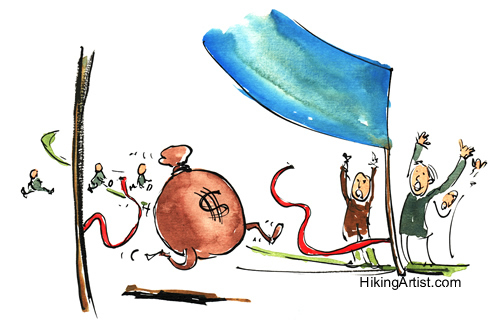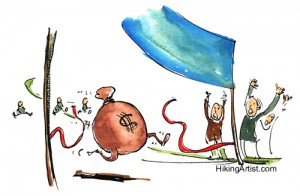
eBook Fair Pricing?
Last week removal from Amazon’s shelves of Independent Publishers Group (IPG) 5000 books is a direct result of the ongoing dispute of what is a fair price for ebooks.
For self-publishers, it seems a fair price for ebooks revolves around $2.99 for unknown writers, reserving the $0.99 price tag for promotion blitz campaigns meant mainly to rise higher in Amazon’s search algorithms and gain in visibility, hence increasing the chances of selling the book at $2.99 or more.
For publishers, however, $2.99 books mean losing money. Of course, the overhead for producing an e-book are lower than those for producing a print book, as they remove the costs linked to printing, print layout and storage, as well as those linked with physically bringing the book to the various selling outlets, but all the other overheads remain.
Though the terms required by Amazon that caused IPG to remove its digital catalog from Amazon are undisclosed, IPG president Marc Mark Suchomel made it clear that the battle was over preserving their margins: in other words, a battle over pricing. Apparently, that battle over pricing does not include the print books, since IPG’s print books are still available on Amazon. So their margins on print books are not overly affected by Amazons requirements, or so it seems.
This clearly points to a divergence of opinion over what constitutes a reasonable margin for ebooks.
So here comes an interesting question. If both print and digital versions of a book are available, what are the costs of producing these?
Both print and digital books require editing and formatting as well as book cover and blurb and all marketing costs. Only print books require all the costs mentioned earlier. So, when evaluating the overhead of a digital book to be produced in addition to a print book, does one count the cost of editing twice for example? Though of course, it would only have to be edited once…
Similarly, what about the costs linked to the book cover creation? Does one create an entirely new book cover for the digital version or simply adapt the print cover to digital requirements?
Should marketing costs be tabulated once or twice?
All these questions are essential in determining what is a fair price for an ebook? A price that will enable authors and publishers to make a decent living from their work yet enable readers to benefit from the reduced costs of digital books vs. print books.
In order to fairly answer that question, one needs to consider the long term future of the book market as well. Though at the present, it seems exaggerated to count the non-paper associated costs twice when establishing the pride of a digital book, it might be based on the growing market share of e-books compared to print books.
Selling ebooks at a price based on costs excluding editing, book cover and marketing as those costs are already included in the price for the print book would end up in getting the readers used to buy a product for far less than its real value.
As ebooks gradually replace print books, publishers will have no alternative but to include all these costs in the price of ebooks. So even if the current prices charged by publishers are deem to high compared to the cost, it is essential to keep in mind that the current low cost of producing a digital version of a print book is misleading.
Furthermore, additional costs for the book industry to protect digital books from piracy are likely to grow and so are the losses incurred through sales of pirated books.
So defining what is a fair price for a digital book is anything but simple.
